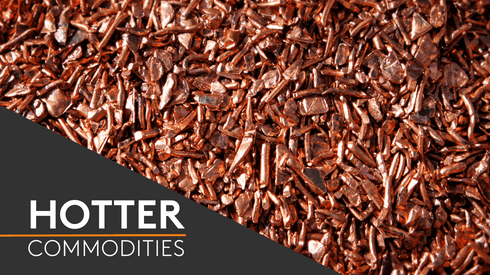For the first 11 months 2017, China had imported 731,339 tonnes of blister copper and anode copper, representing a significant 54% rise from two years ago, according to the World Bureau of Metal Statistics.
Import demand for blister copper, dubbed as “the first option for scrap replacement” in a January research report by analysts at BMO, is expected to climb further this year. Quotas for copper scrap imports into China dropped by 94% year on year in 2018 amid anti-pollution curbs, Metal Bulletin reported in early January.
Analysts have forecast the declining scrap imports to cause a loss of 330,000-500,000 tonnes per year of copper supply in China. This supply gap will have to be filled up by direct imports of refined copper or alternative raw materials.
While copper scrap import volumes are expected to fall by 45-50% year on year, producers and analysts are expecting to see blister copper imports to rise to up to 1 million tonnes in 2018.
Interest in information of blister copper trade in China, the world’s biggest importer, has also grown considerably as a result. Metal Bulletin will keep participants well-informed on the emerging market through reports and analysis.
Why track RCs of 98-99% blister copper?
Blister copper, typically comprising 97-99% copper content, contains different impurities including gold, silver and arsenic. Classified as “non-refined copper” by China’s customs, the niche product has to be further processed before it can be used for refined copper production.
Several months of research by Metal Bulletin shows the mostly traded blister copper in China has a copper content of 98-99%. But the content of blister copper varies sharply due to a wide range of by-products and impurities contained in the material.
Unlike copper concentrates trading, which involves both the base treatment charges (TCs) and refining charges (RCs), blister copper trading only concerns RCs, which stem from the electro-refining processes to make the metal output pure enough for sale, according to the OECD.
Why track annual RC and spot RC separately?
Most imported blister copper is sold on a long-term contract basis, giving rise to a need for an annual benchmark RC settled by a group of key smelters and producers.
The benchmark figure, not well-publicized by the group, could serve as a guidance for market participants who are looking to trade blister on a contract basis.
While the annual benchmark reflects the market’s view toward the medium-to-long term supply/demand fundamentals, the spot RC is a better reflection of short-term market changes. This year, the annual RC was adjusted upward mainly due to macro factors, such as the scrap-ban policy and China’s economic prospects.
Meanwhile the spot RC is sometimes seen as a more accurate indicator of smelting operating status or seasonal changes. For instance, a reduction in domestic blister copper production capacity due to routine maintenance in the first half of 2017 led to notable fluctuations in spot blister RC during the period.
This year, a key concern in the blister copper market, as well as other copper raw materials, will be potential production disruptions arising from the renegotiation of more than 30 labor contracts – the largest number since 2010.
To gauge these trends, Metal Bulletin has proposed to launch two assessments, namely blister copper 98-99% spot RC cif China, and blister copper 98-99% annual benchmark RC cif China. For more information, refer to this pricing notice.




